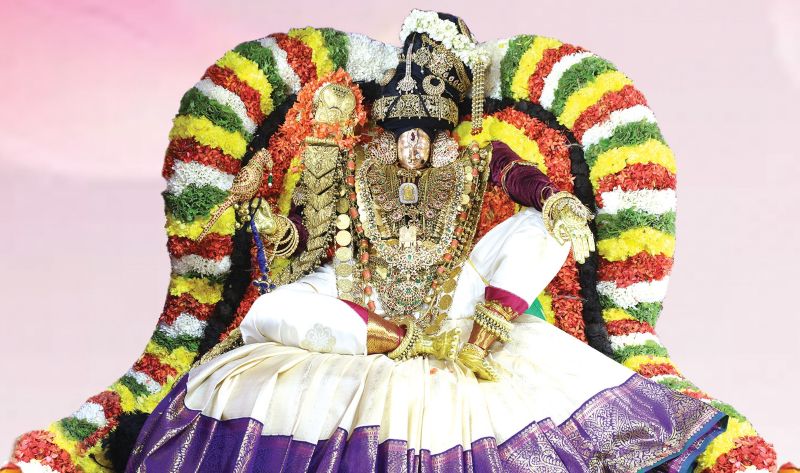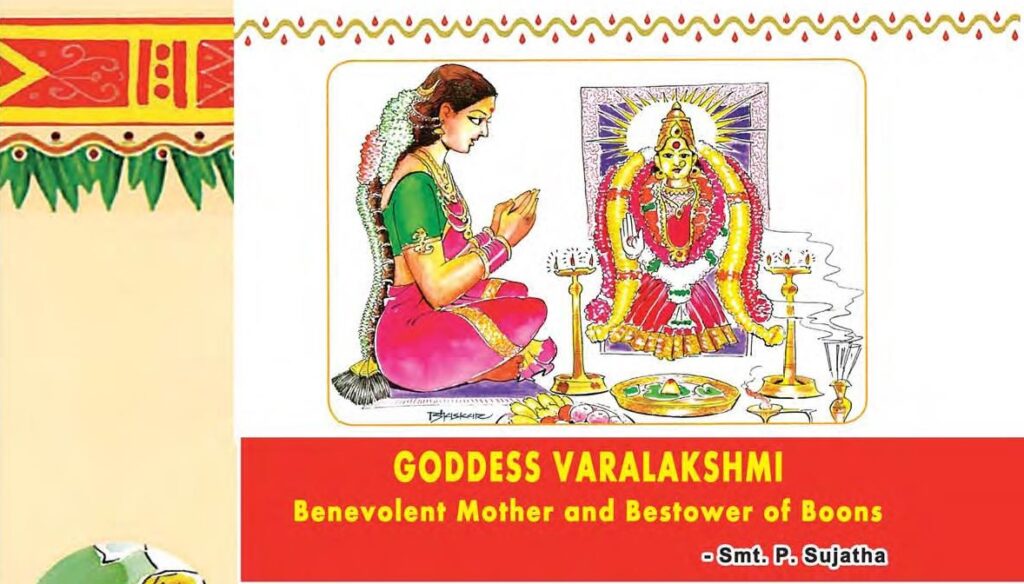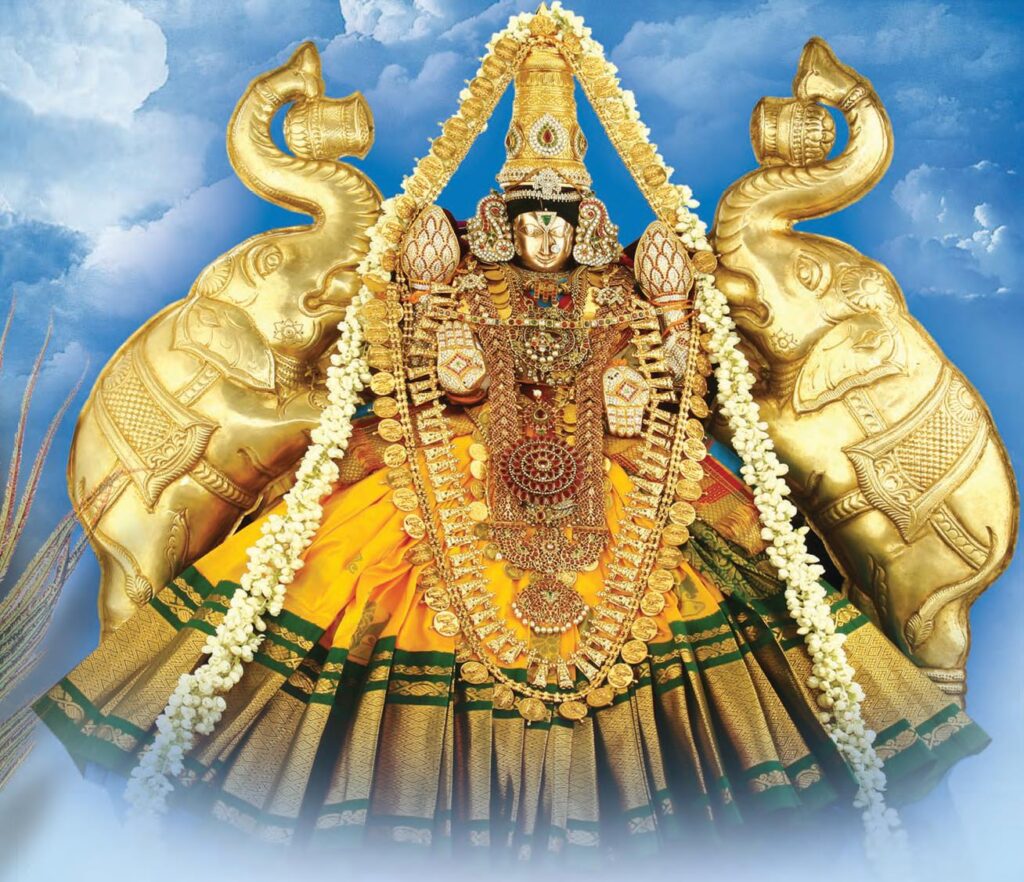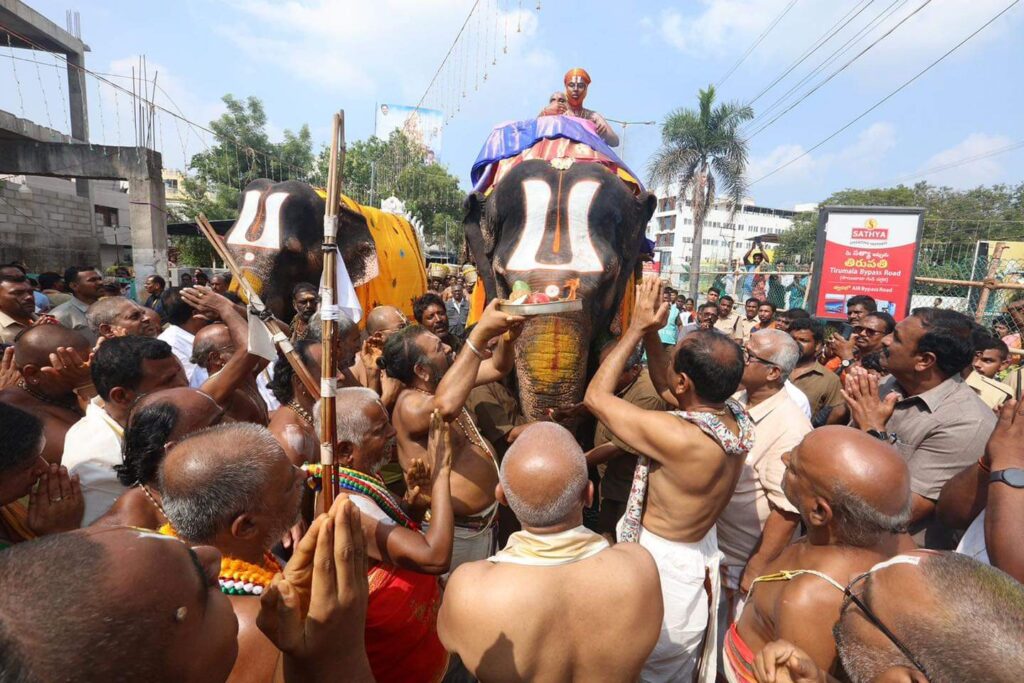Alamelumangapuram Tiruchanur is also called ‘Alamelumangapuram’ located 5 km away from Tirupati, the abode of Goddess Padmavati Devi, the beloved Consort of Lord Venkateswara. It is said that a visit to the temple of Lord Venkateswara is complete only if the pilgrim visits Sri Padmavati Devi temple at Tiruchanur. Click here for Tiruchanur’s Location on Read More
Tag: Tiruchanur
Tiruchanur (also known as Alamelu Mangapuram) is a suburb and neighborhood of Tirupati and is located in Tirupati district of the Indian state of Andhra Pradesh
Divine Story of Mother Alamelumangamma
Is it true? Did the dweller of the Blissful Abode perform penance? The Swamy dwelling in the golden-towered mansion over the seven hills really perform penance? Did Alamelumangamma manifest as a result of the penance performed by the god of gods? Appears strange! Did it happen? Where did this happen? Can we believe the story? Read More
Immense Grace of Goddess Padmavathi Devi at Tiruchanur
Goddess Padmavathi Devi at Tiruchanur The temple town of Tiruchanur located at the base of Tirumala is the abode of Goddess Padmavathi Devi, the divine consort of Lord Srinivasa. To the millions of devotees pouring in from all over the world, the pilgrimage to the Seven Hills begins with the ‘darshan’ of the Devi. Once Read More
Sri Padmavati Ammavaru Brahmotsavams 2024, Tiruchanur – Majestic Festival of Devotion
Sri Padmavati Ammavaru Brahmotsavams 2024 Tiruchanur, the divine domain of Goddess Sri Padmavati Ammavaru, is one of the highly exalted places in Andhra Pradesh. The temple of Sri Padmavati Ammavaru is situated 5 km from Tirupati town and is exclusively dedicated to Sri Padmavati Ammavaru, the consort of Lord Sri Venkateswara. Tiruchanur Sri Padmavathi Ammavari Read More
Goddess Varalakshmi – Benevolent Mother and Bestower of Boons
Goddess Varalakshmi Every married Hindu woman, mostly in the southern states of our country, propitiates the goddess Lakshmi on this most auspicious day in the month of Shravana. They pray to the goddess Varalakshmi (Lakshmi, the boon-giver)) to provide happiness, wealth, health and longevity to their husbands. In other words, it is a prayer made Read More
Sri SuryaNarayana Swamy Temple, Tiruchanur
Sri Suryanarayana Swamy Temple, Tiruchanur There are a few temples of Lord Suryanarayana Swamy in India. Among them, the temple in Tiruchanur is very ancient, historical and famous. Lord Sri Venkateswara Swamy Himself installed the deity and worshipped Him in Tiruchanur. Tiruchanur, the Divya Kshetram, is approx. at the distance of five kilometres away from Read More
The Miracle of Padma Sarovara
Goddess Mahalakshmi – Alamelu Manga – Holy Pond – Miracle of Padma Sarovara In the ancient holy land of Bharata Khanda, there were regions, which were famous by the names of kingdoms called Chappannar. There were 56 countries. Once upon a time, it was called Kambojadesam, named after the king Kamboja. But, over time, it Read More
Varalakshmi Vratam at Tiruchanur Sri Padmavati Ammavari Temple
Varalakshmi Vratam at Sri Padmavati Ammavari Temple Varalakshmi Vratam festival with grand festivity and faith is celebrated in the Tiruchanur Sri Padmavati Ammavari Temple also as a special annual event. The rituals of this festival are different in many aspects from the other normal rituals in the temple. The Process of Varalakshmi Vratam On this Read More
Manifestations of Goddess Lakshmi
Manifestations of Goddess Lakshmi One should be aware of Ashtalakshmis or the manifestations of Goddess Sri Lakshmi. Veda Lakshmi in TretaYuga A sage named Brahmarishi Kushadhvaja was fixated on the Vedas. He was apathetic towards the institution of marriage but enthusiastic about begetting Goddess Lakshmi. One day while pursuing the Vedas, the celestial Narthaki (dancer) Read More
Venkateswara’s ‘Saare’ to Sri Padmavathi Ammavaru
Article posted on Saptagiri Magazine by – Dr. Venkata Harshavardhan R.D. Sri Padmavathi Ammavari Kartika Brahmotsavams is a spectacular festival of Tiruchanur and Tirupati. Just as Tirumala Brahmotsavam ends with CHAKRA SNANAM, even Tiruchanur Kartika Brahmotsavam ends with a Chakrasnanam on the auspicious Panchami Teertha day known as ‘Panchami Theertham’. Saare – From Tirumala to Read More






